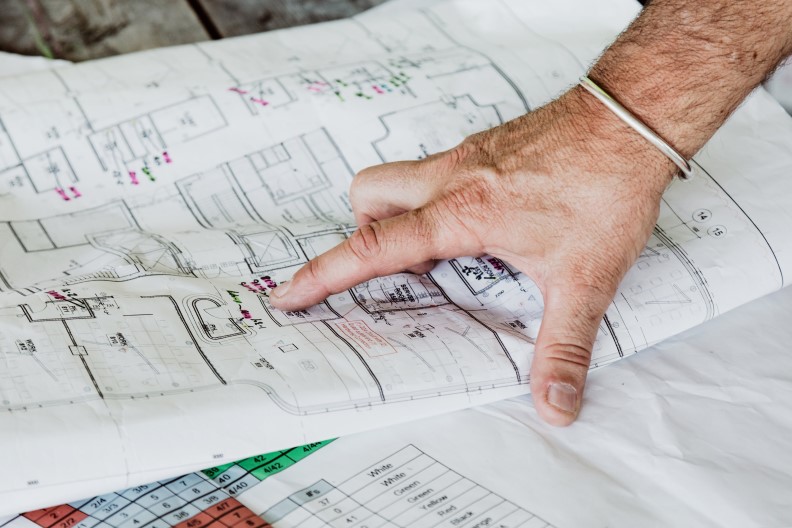The most successful companies in the world follow research data to improve their employees’ productivity. That includes office environment.
An office environment can be described using measurable and subjective factors. The former could be, for example, indoor temperature, the concentration of air pollutants, or noise. The latter refers to how the workplace is perceived by employees. Scientific studies have found that both measurable and subjective factors have a deep impact on wellness and performance.
An article by Entrepreneur.com identifies 7 features of an office environment that affect productivity. Their impact can be positive or negative, depending on how they are managed:
Office Feature | Productivity Effect |
Air quality | A study published on PubMed states that poor air quality can reduce productivity by 6% to 9%. |
Ambient noise | Noise can reduce productivity by up to 66%, and this includes nearby conversations in open-plan offices. However, complete silence is also detrimental for productivity. |
Music | Music can also be considered a kind of ambient noise. It depends on individual preferences, and could have a distracting effect just like conversations. |
Lighting | Natural lighting improves mood and productivity up to 16% according to a study by the University of Illinois at Urbana-Champaign. |
Temperature | Office temperature can influence productivity up to 5%. Results vary, but the highest productivity tends to occur at around 71°F (21.7°C). |
Color | Just like with music, its effect on productivity depends on individual preferences. In general, blue is considered a calming color, green is an efficient color, while red is an emotional color. |
Plants | Plants can boost productivity by up to 15%, when used in combination with other air quality improvements.** |
In addition to the above 7 factors, we believe that office layout also plays a critical role as an environmental factor of an office, and many studies agree on this.
This article will discuss how each factor affects productivity, according to scientific research.
Importance of HVAC Design: Temperature, Ventilation and IAQ
The HVAC design has a major impact on the type of indoor environment that is created. A well-designed system conserves an adequate temperature, while providing sufficient ventilation and keeping air pollutants at low levels. Ideally, an HVAC system should also produce minimal noise, which is also among the factors that affect the indoor environment.
- The main challenge for HVAC engineers is balancing indoor environmental quality and energy consumption.
- Excessive heating, cooling and ventilation all represent an energy waste.
Heating and cooling systems normally consume more energy than ventilation systems. However, the airflow supplied to a building is a key factor that determines the heating and cooling needs. Traditionally, ventilation systems have operated at full capacity whenever a building is occupied. A more innovative approach is controlling ventilation based on air quality measurements, which is possible with Foobot's AI-powered technology.
Indoor temperature and ventilation are among the many factors that influence productivity that have been studied by the Universiti Teknologi MARA. According to their research,
- Air conditioning can increase productivity by 5% to 15%
- Productivity drops by 2% for every degree above 77ºF (25°C)
Finding the ideal temperature for an office is very challenging, since individual preferences and biological differences between men and women come into play. However, research evidence points to an ideal temperature of around 71°F (21.7°C).
According to the University of Reading, temperature issues and stuffy air are among the most common complaints by office workers. Both problems can be attributed to a deficient HVAC system. The study concludes that improving the office air quality and comfortability can boost productivity by up to 10%.

Meeting rooms tend to become too warm and accumulate air pollutants, unless the HVAC system is properly designed.
The Technical University of Denmark found that poor air quality reduces productivity by 6% to 9%. Improved air quality is possible by removing pollution sources or with increased ventilation. However, eliminating pollutants at the source does not consume energy, while a higher airflow requires more fan power. Ideally, air pollutants should be minimized and monitored, while ventilation systems are controlled according to air quality measurements. Projects that improve air quality can have a payback period as low as 1 month, thanks to Foobot's proprietary technology.
Jones Lang LaSalle is the largest commercial real estate firm in the world, and they developed the “3-30-300 rule” to describe how productivity impacts the bottom line. While there are differences based on location, the annual ownership costs of an office can be estimated as follows:
- Utility costs: $3 per square foot
- Real estate costs: $30 per square foot
- Salaries: $300 per square foot
For example, if a 50,000 sq.ft. office improves productivity by 10% with air conditioning, the economic benefit is $1,500,000 per year according to the 3-30-300 rule. Similarly, if air quality improvements achieve a 6% productivity gain, it is equivalent to $900,000 per year.
How Plants Can Complement a High-Performance HVAC System
The benefits of indoor plants have been studied by various institutions, including NASA. Plants can act as natural filters, absorbing many harmful substances from the air as part of their metabolism. In addition, plants add a natural element to indoor spaces, and this has a positive impact on the mood of occupants. According to Universiti Teknologi MARA, the benefits of plants include reduced stress and enhanced attention. An article by Wired (UK) mentions that they can boost productivity by 15%.
In open-plan offices, plants can also be used strategically to separate areas and provide more privacy. The loss of privacy is among the main issues pointed out by workers in open offices.
**Updated November 2019.
The decades-old claims about the power of plants to improve indoor air quality might be totally wrong, according to a recent study by the Drexel University. Researchers say that the experiments conducted in previous studies were done in lab-controlled environments.
According to their findings, in the real world, hundreds of plants would be required in a single room to come close to the air-cleaning capacity of just one air purifier.
Although we should be cautious about the findings of this study, it casts reasonable doubts on a generalized belief, and opens up a new and interesting perspective on this topic.
How Ambient Noise and Music Affect Indoor Spaces
According to the study by Universiti Teknologi MARA, noise distraction is strongly dependant on the type of noise and its intensity. Noise is one of the main issues in open-plan offices, since it causes distraction and makes concentration difficult.

Air ducts, and unsolicited conversations are important and constant sources of distracting noise.
In addition to performing its intended functions, an HVAC system should also be designed to produce minimal noise. There are many ways to accomplish this:
- If an HVAC system uses air ducts, the airflow must be carefully calculated in order to choose the right dimensions for the air ducts. Oversized ducts represent a waste of material and space, but undersized ducts are noisy.
- The same applies for oversized mechanical equipment, which can lead to vibration and noise issues. HVAC equipment should have adequate support pads to dampen vibration.
- Noise can also be isolated by selecting adequate locations for mechanical rooms. For example, noise complaints will be likely in an office that is close to an air handler.
Managing noise in an open-plan office is especially challenging, since a work-related conversation between two people can become noise for someone who is not involved. Noise has been identified as one of the main factors that increases stress in the workplace, leading to reduced job satisfaction.
Uncontrolled noise from nearby conversations can have a severe impact on offices as it reduces brain capacity roughly by two thirds, according to Julian Treasure, author of Sound Business.
An article by TechRadar emphasizes how the selection of music should focus on creating “ambience”, instead of selecting a random radio station with loud music and advertising. Sound that is natural and predictable is considered the best for concentration; birds, water movement and forest sounds are some examples.
Finding the Best Office Layout for Each Type of Work
Sheffield Hallam University (UK) studied the relationship between office environments and productivity. However, their study added an interesting variation: participants were classified according to four work patterns, and the effects were studied separately in each case.
The four work patterns considered in the study were the following:
- Individual process work
- Group process work
- Concentrated study
- Transactional knowledge

Each office layout should be different and according to the kind of work carried out.
The typical office for individual process work is described as a “hive”, an office for group process work is described as a “den”, concentrated study is suited for a “caves and commons” layout, while transactional knowledge work can occur in offices with a “club” layout.
There is no one-size-fits-all solution when it comes to office layouts. According to the above findings, the layout of your office should meet the nature and demands of the predominant work patterns otherwise risking to suffer from productivity losses.
Implications for HVAC Design
The type of work determines the ideal office layout, and office usage patterns determine the need for ventilation, heating and cooling. For this reason, analyzing the office layout is very important before proceeding with the HVAC design, and/or renovation.
Occupancy and air quality monitoring can be used to make HVAC designs more flexible. As office workers move around to complete different tasks, occupancy sensors and air quality monitors can determine the ventilation needs of each office area.
Avoiding Crowded Workspaces
Companies try to save on real estate costs by reducing their floor space, and this is among the main reasons why open-plan offices became so popular. However, Universiti Teknologi MARA and The University of Reading (UK) have both studied the negative effects of crowded workplaces. Crowded workplaces reduce privacy and cause discomfort, and this results in less productivity. Over time, this leads to reduced job satisfaction, and capacity to retain and attract talent.
How Lighting and Color Can Enhance Indoor Environments
Lighting and color are closely related, since they determine how an indoor space is perceived visually. Also, the way in which human vision perceives color is strongly determined by the lighting quality.
Warm tones of light are considered relaxing, while cool tones are considered energizing. Laptop screens and smartphones produce plenty of blue light, and this is precisely why they affect sleep when used at night.
Improving the air quality of an office can produce a productivity growth of up to 15%. This situation is enhanced, both in terms of productivity and comfort, with proper temperature control.
The relationship between lighting conditions and productivity has been studied since the 1920s. One of the first studies was conducted in the silk weaving industry: natural views with vegetation and daylight were linked with improved attention during work hours. Also, natural lighting mitigated the productivity loss that tends to occur after lunch.
Moving out of a building which only provided window views for 30% of workstations, to a new one that covered 96% of them, produced a 16% increase in claims processing productivity for the West Bend Mutual Insurance Company, according to a study from the 1990s.
Unfortunately, lighting quality is often overlooked in companies: according to a study by the American Society of Interior Design, 68% of employees complain about office lighting. In most cases, lighting is described as “too dim” or “too harsh”. Insufficient lighting forces the eyes to work harder, while harsh lighting can cause visual fatigue.
With respect to the color scheme of an office, perception is very subjective because it involves personal preferences. According to an infographic published by Entrepreneur.com, blue is regarded as a stable and calming color, green is favorable for extended working schedules, yellow is an optimistic and creative color, while red is described as emotional and passionate.
Conclusion
Designing an office that ensures productivity and wellness requires a collaborative effort between architects, interior designers and engineers. In the first place, the office layout should be adequate for the types of work performed. The office space should provide as much natural lighting as possible, combined with high-quality artificial lighting and an appealing color scheme.
The office layout is also an important factor when designing the HVAC system, which influences many aspects of the indoor environment, such as temperature, humidity, noise and indoor air quality. A high-performance HVAC design can be complemented with indoor plants, which are beneficial for mood while having air-filtering properties.
The productivity impact of the office environment has been analyzed in various scientific studies. Slightly poor air quality can reduce productivity by 6% to 9%, while distracting noise, like nearby conversations you are not part of, can reduce your brain's attention more than half. On the other hand, effective air conditioning and indoor plants have both been linked with a productivity gain of up to 15%. In a typical office with an area of 50,000 sq.ft., a 1% improvement in productivity brings an economic benefit of $150,000 per year (according to the 3-30-300 rule).
In the average office, the payroll costs per square foot are 10 times larger than real estate costs and 100 times larger than utility costs. Therefore, the focus when assessing changes in an office environment must be improving employees' productivity. Even a minor improvement in productivity can have a large impact on business profits, something that top performing companies know very well, and so do you now.

Indoor comfort and energy savings on autopilot
Thermal comfort and indoor air quality are very correlated to staff health and cognitive performance, studies say.
Since human resources are businesses' largest expense, it's time to give them the best.
